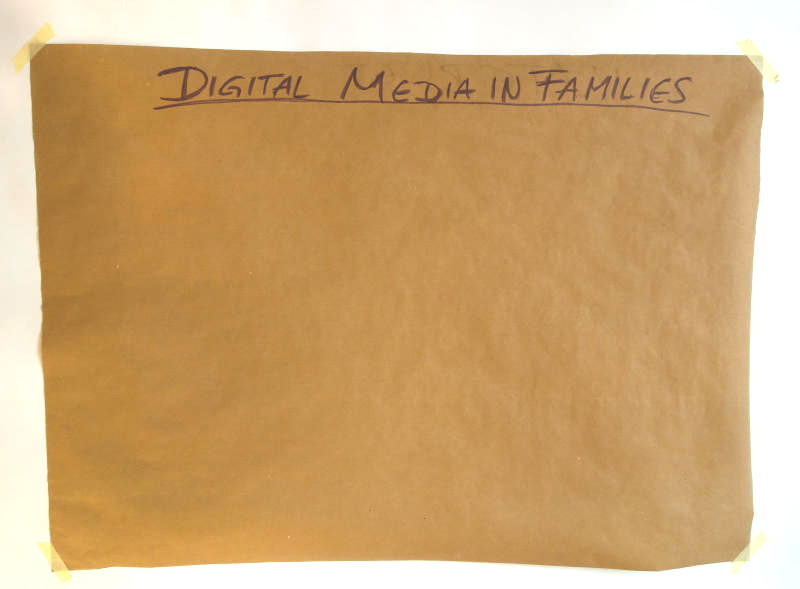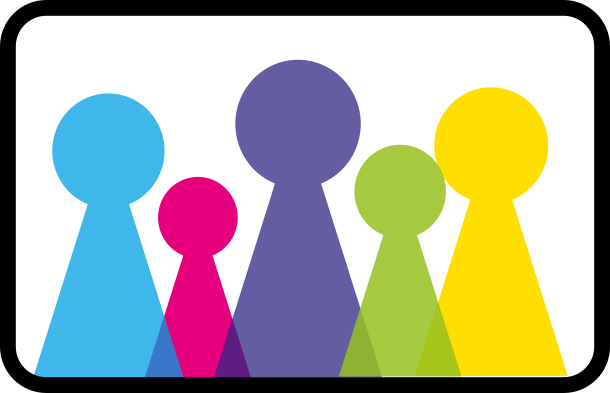Aims of the activity and description of target group
The topic board is a visual representation of concepts and ideas using an arrangement of images, text and other design materials. Participants will create a topic board to get a first visualization of the situation in which they would like to carry out a Citizen Science project.The activity is suitable for researchers and citizens in a group or in an individual learning environment.
Resources, Materials needed
Paper Version:
- Large sheet of paper
- Pens
- Scissors
- Glue
- Newspapers, magazines or other visual material that represents the topic
Digital version:
- Whiteboard tool or presentation software
- images or screenshots
Duration
45 - 75 minutes (Depending on amount of participants and how clear the project scope already is.)
Step 1 – Name of the topic (5 - 10 minutes)
Give your topic board a title so that everyone can easily understand what you are working on. If you are not sure about a topic yet, try to describe what you have in mind, e.g. a question or a task ("Why are there not so many bees in my garden anymore?", "Raising awareness about the importance of medical prevention.").

Step 2 – Gathering material (30 minutes)
Gather images, newspaper articles, keywords or whatever represents your potential research topic or question and the area in which your project might take place.
- core themes, elements, problems, questions, initial ideas for solutions
- the general setting in which the project could take place (country, city, neighborhood, town...)
- people involved (researchers, organizations, citizens)

Step 3 – Presenting the result (5 minutes per person)
Present your topic board to the other participants, colleagues or interested parties:
- Introduce the topic.
- Describe the core elements.
- Describe what you found out so far about your potential setting of the project.
- Describe what you found out so far about the involved people
Example
“Our topic is called ‘Digital Media in Families’. We see a lot of families having big fights about the use of digital media and a lot of kids getting into dangerous situations on the net. Fights in the family are around the amount of kids’ media usage, which devices and programs they are allowed to use or with whom they are in contact online. Parents often know little about the potential risks on the net as well about the chances digital media can bring. That’s why they leave their kids often unaccompanied online although the best thing they can do is being with their kids when they use digital media. Families and especially single parent households are often under a big time pressure so there is often not enough time to take a lot of time for these issues. On top parents and kids often feel a high pressure by peers and the society to use digital media in a way the family would normally not use.
We would like to help families having an easier life with digital topics. We want to focus our project on families that are in a more stressful situation than others, e.g. single parent households, families with a migration background, low-income families. Therefore we would like to run the project in one of the city’s quarters where a lot of these people live.
There is a lot of people outside the family influence the topic, like friends, teachers, colleagues, people in the public. From a research perspective there is a lot of academic work going on but the results hardly reach the families in their daily lives and can often not be updated as fast as necessary with latest developments.”„
Learning Outcomes - which skills are addressed?
Participants get an overview of the topic they want to research and get a feel for the issues and the environment in which they will carry out the project. This could also raise questions, challenges and problems that might arise from the project. The also learn to present their project idea to other people.
How do you check the outcomes are reached?
Participants can give a 5-minute overview of the topic they want to research to an audience who may have no prior knowledge.
De-Briefing questions
- What do you think of your topic map? Were you able to include all relevant aspects?
- Did you find any open questions or concerns regarding the topic?
- Have you been able to identify a coherent research question or brief for your project?
Further links and readings
- Cajun Koi Academy (2022): The Ultimate Mind Map Tutorial. https://yewtu.be/watch?v=g7j_CoKD1Xs (last viewed 02/05/2024)
- Tinkerlabs: How to Make a Mood Board that Inspires Creative Energy. https://tinkerlab.com/how-to-make-a-mood-board-that-inspires-creative-energy/#comment-143209 (last viewed 02/05/2024)
- Yuri Malishenko (2020): Visual Thinking Introduction. https://yewtu.be/watch?v=9-CS2JT980o (last viewed 02/05/2024)
